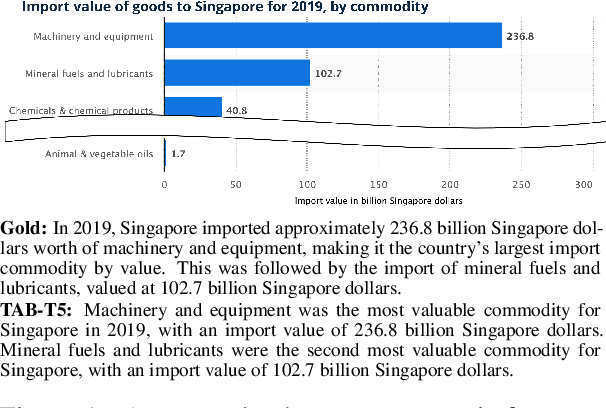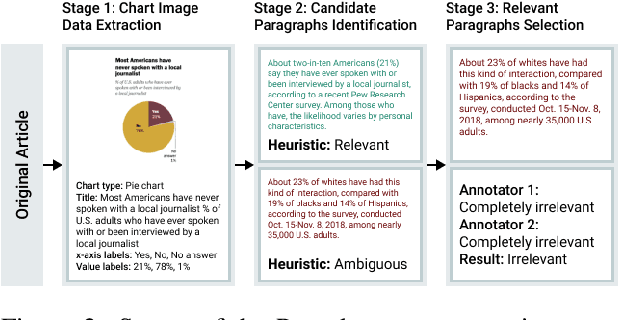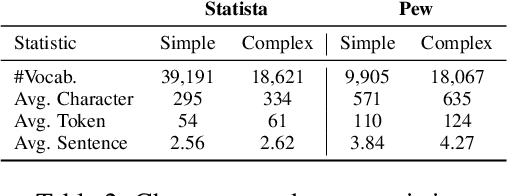Rixie Tiffany Ko Leong
OpenCQA: Open-ended Question Answering with Charts
Oct 12, 2022



Abstract:Charts are very popular to analyze data and convey important insights. People often analyze visualizations to answer open-ended questions that require explanatory answers. Answering such questions are often difficult and time-consuming as it requires a lot of cognitive and perceptual efforts. To address this challenge, we introduce a new task called OpenCQA, where the goal is to answer an open-ended question about a chart with descriptive texts. We present the annotation process and an in-depth analysis of our dataset. We implement and evaluate a set of baselines under three practical settings. In the first setting, a chart and the accompanying article is provided as input to the model. The second setting provides only the relevant paragraph(s) to the chart instead of the entire article, whereas the third setting requires the model to generate an answer solely based on the chart. Our analysis of the results show that the top performing models generally produce fluent and coherent text while they struggle to perform complex logical and arithmetic reasoning.
Chart-to-Text: A Large-Scale Benchmark for Chart Summarization
Mar 21, 2022



Abstract:Charts are commonly used for exploring data and communicating insights. Generating natural language summaries from charts can be very helpful for people in inferring key insights that would otherwise require a lot of cognitive and perceptual efforts. We present Chart-to-text, a large-scale benchmark with two datasets and a total of 44,096 charts covering a wide range of topics and chart types. We explain the dataset construction process and analyze the datasets. We also introduce a number of state-of-the-art neural models as baselines that utilize image captioning and data-to-text generation techniques to tackle two problem variations: one assumes the underlying data table of the chart is available while the other needs to extract data from chart images. Our analysis with automatic and human evaluation shows that while our best models usually generate fluent summaries and yield reasonable BLEU scores, they also suffer from hallucinations and factual errors as well as difficulties in correctly explaining complex patterns and trends in charts.
 Add to Chrome
Add to Chrome Add to Firefox
Add to Firefox Add to Edge
Add to Edge